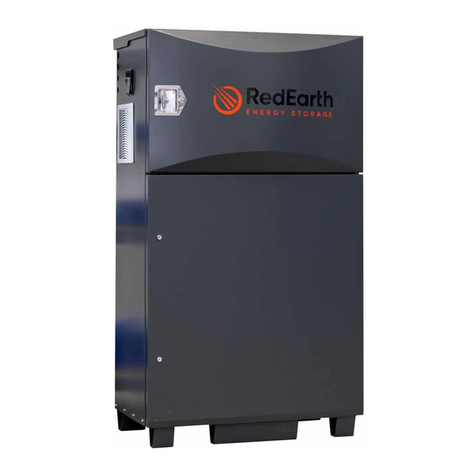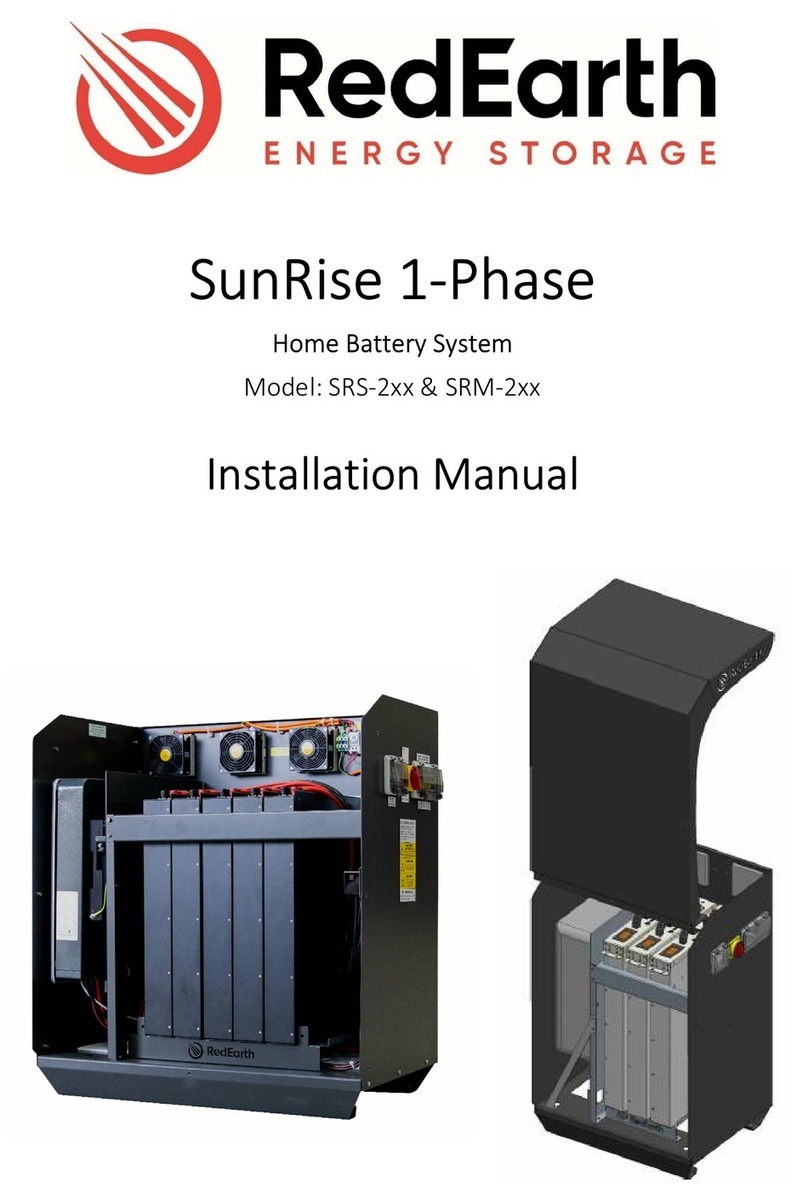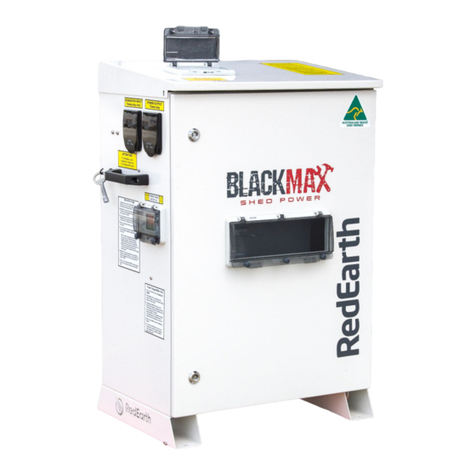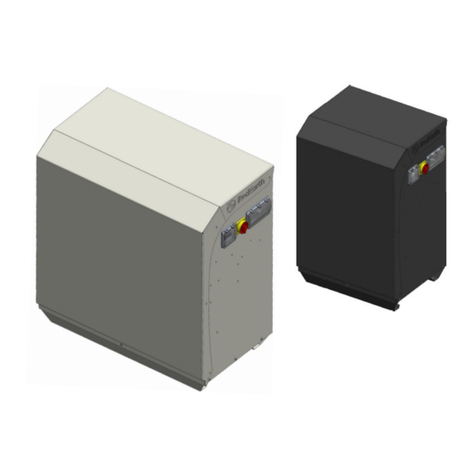
1
Installers and users are responsible for familiarising themselves with this manual.
The Troppo-4841 battery is certified to IEC62619:2017 and AS/NZS 60950.
The Troppo battery uses high-quality cylindrical Lithium Ferro Phosphate (LFP) cells which are safe, robust
and reliable in higher ambient temperatures. The cells themselves are also certified to IEC62619 (2015) by
TuV, specifically for RedEarth, and have industry leading service life. They are fully recyclable.
Each Troppo battery has an internal Battery Management System (BMS) designed together with RedEarth
that provides protection against operation in over and under temperature, over and under voltage, over
current (charging), as well as short circuit (discharging) protection. It also extends the service life of the
battery through internal balancing of the individual cell strings.
Low voltage protection feature: The Battery Management System (BMS) has a feature that shuts down the
battery if the voltage goes below 40V+/-2 volts. This is to protect the cells from damage. See the relevant
section of this instruction manual to restart the battery.
The battery includes a 2-pole non-polarised circuit breaker specifically manufactured for RedEarth. A
2-pole circuit breaker is required to meet Australian standards for battery installations. A single pole
circuit breaker alone is not normally sufficient in Australia as batteries are usually installed with a floating
negative, unlike e.g. in the USA where the negative terminal is usually grounded to earth and so only a
single-pole circuit breaker is required on the positive cable.
Other safety features of the Troppo battery include the use of touch-safe high-quality industry standard
Amphenol Surlok DC connectors for safe and easy connection of the DC battery cables. These have a
significant safety advantage over legacy systems using exposed bolted terminals. Bolted connections
present a short-circuit risk as well as the possibility of a loose connection becoming a hot-joint.
The display included in the Troppo battery increases safety by showing the voltage and current status of
the battery at all times. This is helpful when batteries are being connected in parallel, and larger balancing
currents can flow if the battery voltages are not similar. Note that the BMS includes a safety feature that
does not allow current to flow if the battery voltages are different by more than 2-3 volts. Bring the battery
voltages closer together by charging or discharging one of the batteries before reconnecting.
The display also includes an odometer function that shows the total energy in kWh that has flowed into
and out of the battery. It can also be useful for indicating if one battery in a string is not doing as much
work as other batteries.
A status indicator light is also included on the battery. This is always lit when the battery circuit breaker is
on and the battery is ready for use. If the battery has shutdown due to under-voltage protection shutdown,
then it will not light up. The light also incorporates a momentary button feature that is for future
developments of the battery.
Installation:
Installation should only be performed by qualified and experienced installers who can specify the correct
cables and DC bus arrangement, external circuit protection, polarity checking and suitability of the design
for the application. RedEarth provides factory built and tested energy storage systems designed and
engineered to national and state requirements to simplify installation.
I. Safety Instructions




































